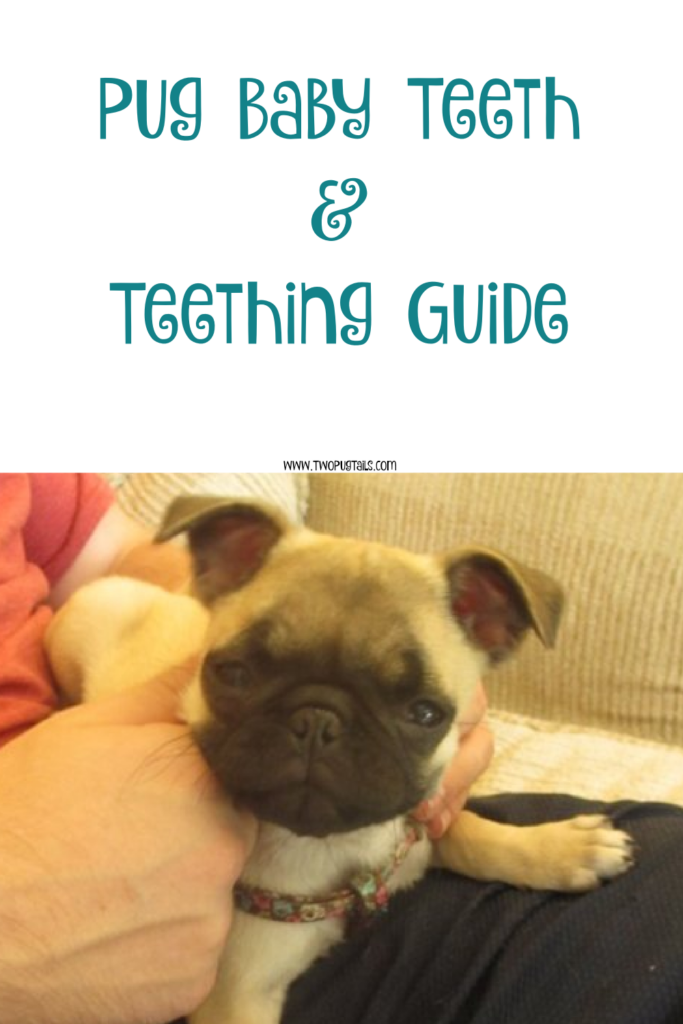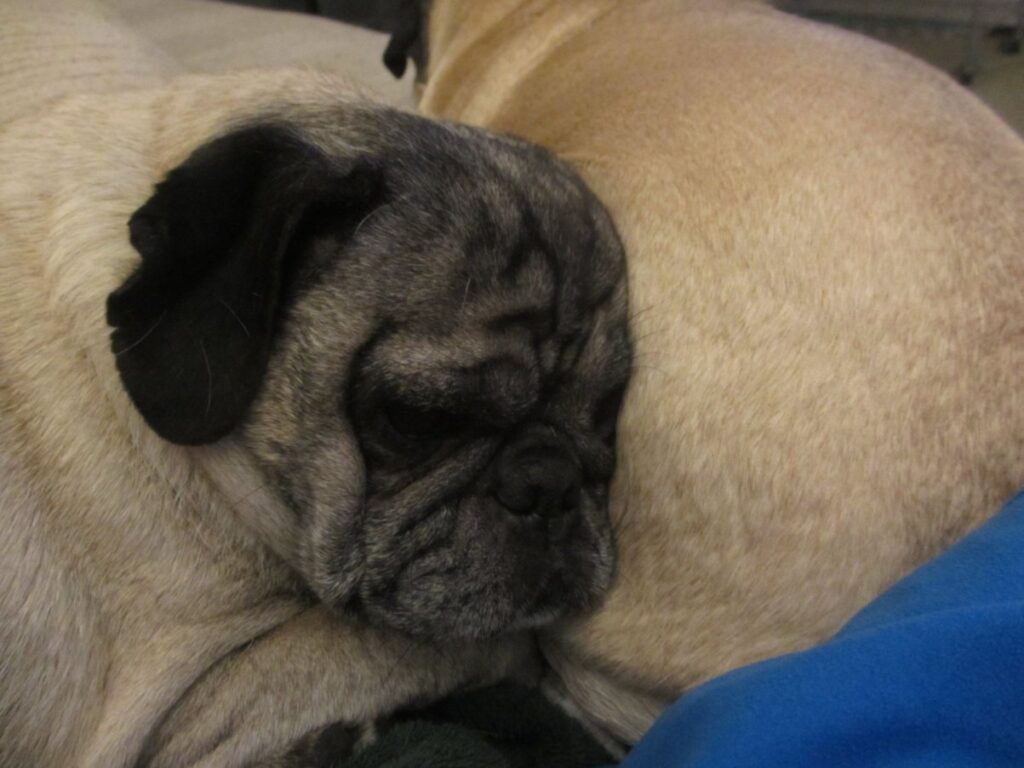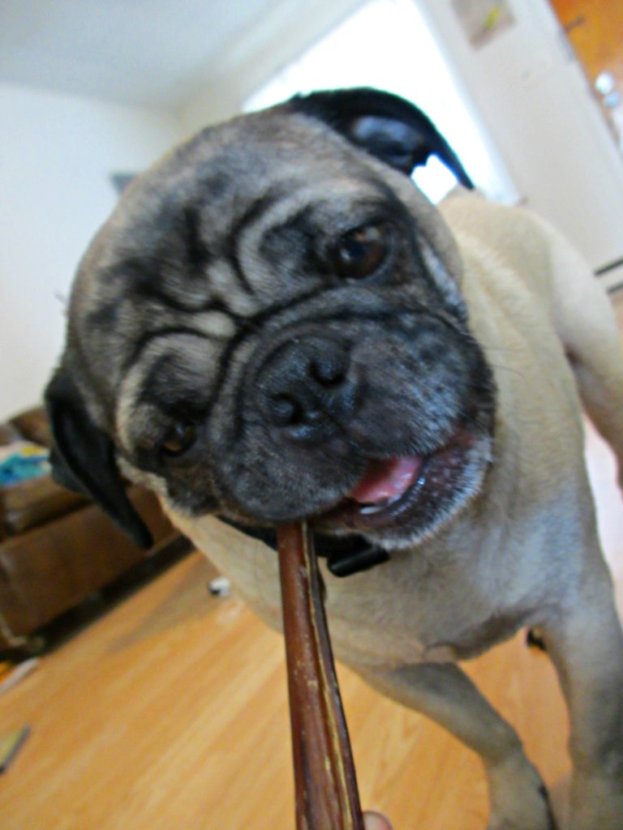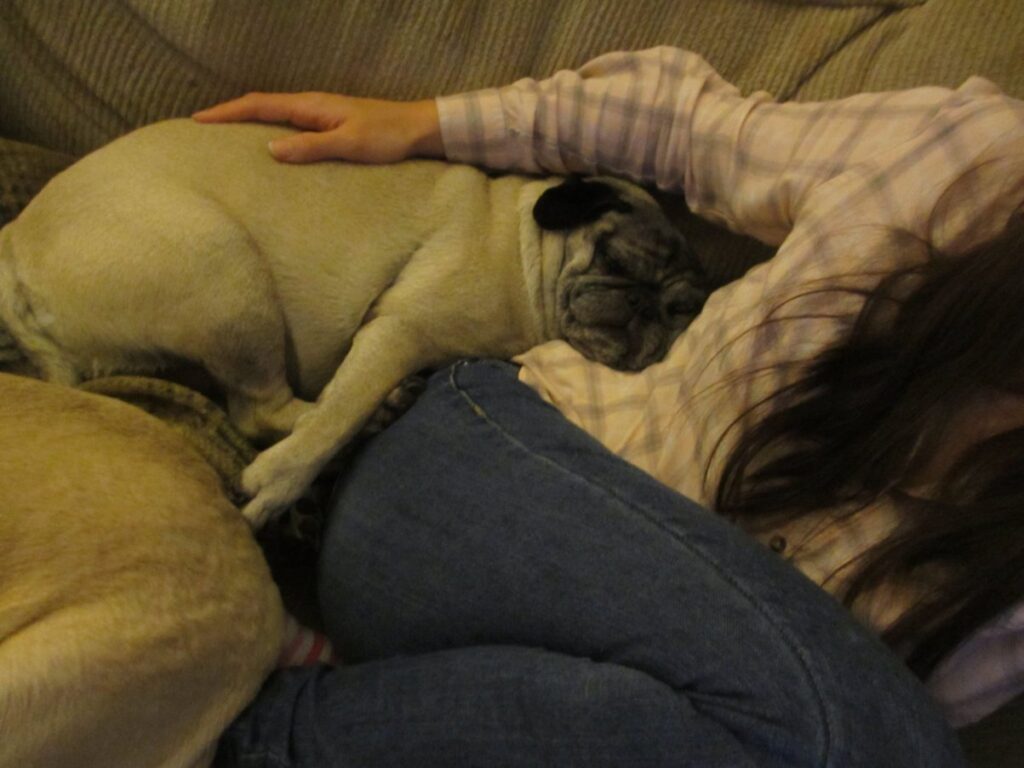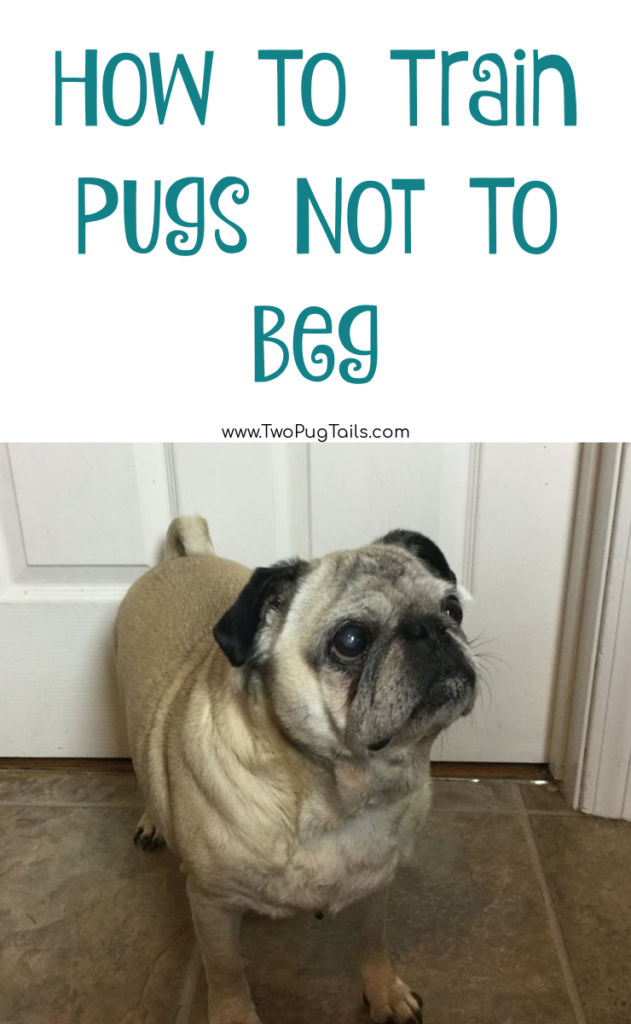Why Pugs Lick Things
New moms lick their puppies to clean them after birth and to stimulate them to breathe. They also lick their pups to stimulate them to go to the bathroom as new puppies. As puppies get older, they often will lick their mother’s muzzle. It seems to be a bonding behavior for dogs.
In many cases, licking is a way that dogs show affection.
Dogs lick other dogs to show respect, so when your pug licks you, it’s possible that part of the reason why dogs like to lick people could be that they are trying to show you respect.
Of course, dogs also like to lick things simply to taste them! This is why dogs will lick foods, plants or other things that they suspect may taste good to them. Part of the reason why dogs like to lick people is because our skin tastes a bit salty to them.
When a dog is licking themselves, it’s usually to clean themselves. Dogs often lick their nose to clean it, as this can actually increase how well they can smell!
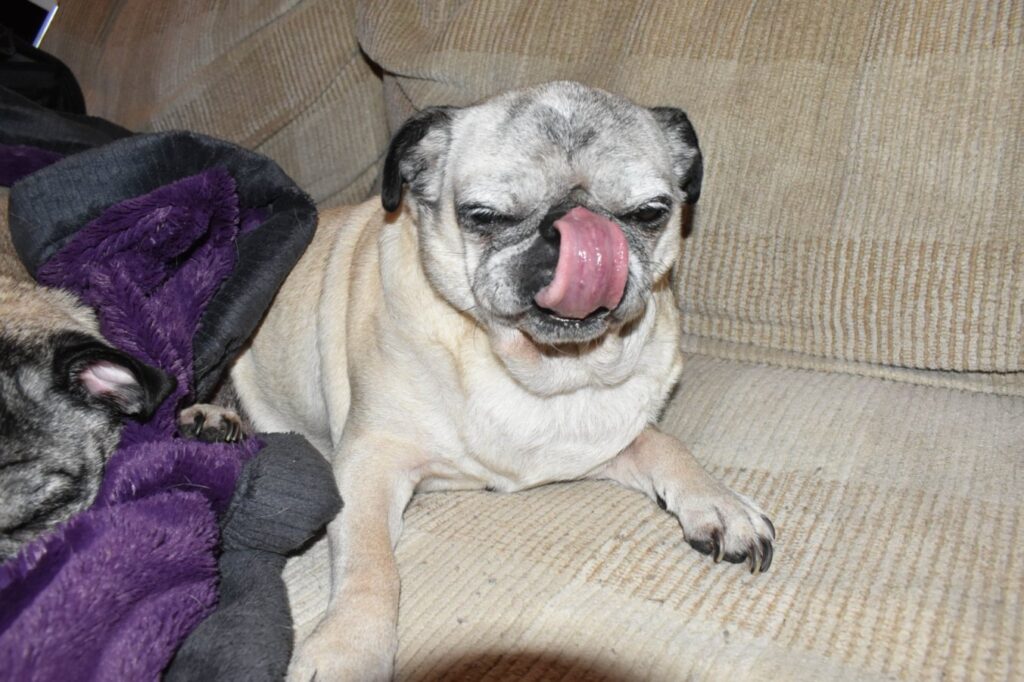
When Pugs Lick Because Something Is Wrong
While licking is a very normal and safe behavior in dogs much of the time, there are times where licking can be a sign of a problem. Here are some of the reasons why pug lick when something is wrong:
Licking releases endorphins for dogs which can soothe their pain. This leads pugs to lick when they are in pain or needing comfort, sometimes.
If pugs are having pain, irritation or itching in an area, they may lick that area in an attempt to soothe it. If you find your dog is suddenly wanting to lick a specific area, have the vet check it out.
If dogs develop hot spots from allergies or similar issues, they’ll often lick that area a lot. If you see your dog licking a particular spot quiet a lot, check the fur and skin in that area to see if there has been any fur loss or if there is any redness or oozing.
“Air licking” or when dogs appear to lick nothing or lick the air, can be something stuck in their mouth (like a hair) or painful teeth. If you notice air licking, check their mouth to see if they have something stuck. If this is a regular behavior, schedule a vet visit to see if it’s time for a dental workup.
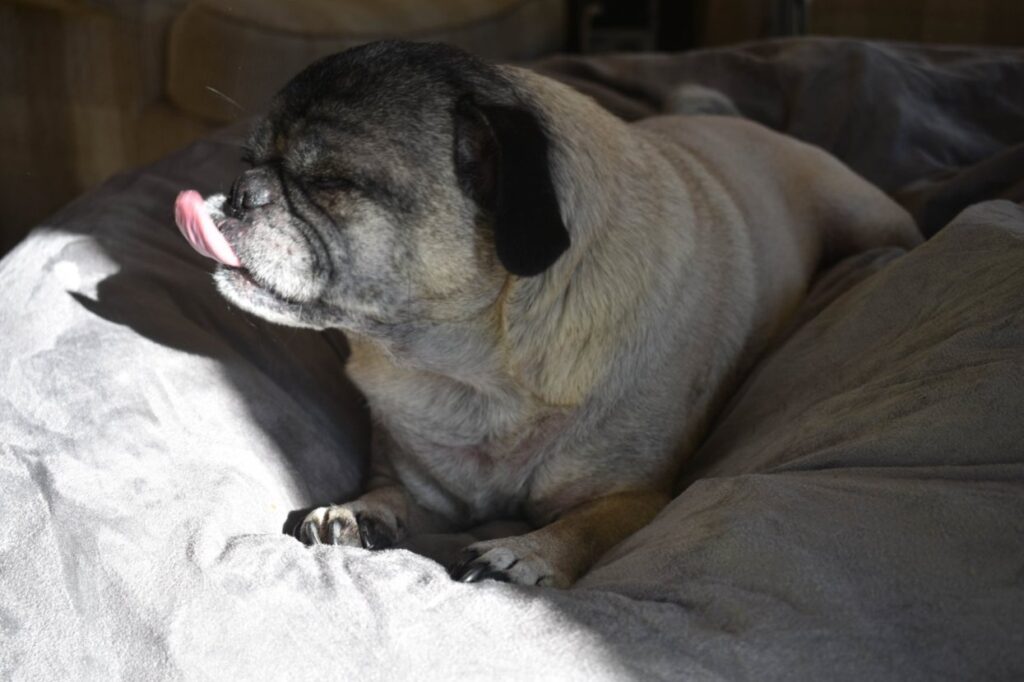
Compulsive Licking In Pugs
If your dog doesn’t have a problem with a particular area but is constantly licking it, it may have become a compulsive habit. Sort of like how people can bounce their leg or twist their hair unconsciously. Dogs can sometimes develop the habit of licking just out of a nervous habit or boredom habit.
If severe, licking can lead to medical issues such as hair loss and skin infection. It’s best to try to curb habitual licking early if you can. The way to do this is to resolve the underlying cause. If anxious, try to work on the source of their anxiety or get them treatment for anxiety. If it’s from boredom, find enrichment activities to help them out.
Excessively licking surfaces (like furniture) can be GI related. A study was done that showed that dogs who excessively lick surfaces have nearly a 75% chance of having gastrointestinal trouble. These GI issues varied but included irritable bowel syndrome, delayed gastric emptying, a foreign body in the digestive tract and more.
After the dogs were treated for their GI issue, about half of them stopped the excessive licking behavior!
Source: ScienceDirect.com.
How To Stop Your Pug From Constantly Licking
Block them from the area. When my pug went through a phase of obsessively licking his paws, we would put socks or dog booties on him for small amount of time. We didn’t leave them on 24/7, as his feet needed to breathe. However, just putting the socks or booties on if he was fixated on licking would get him to stop for a while, and then we’d take them off later.
Don’t positively reward it. Sometimes we can accidentally train dogs to do the opposite of what we’d like them to do, by accidentally rewarding their behavior. I Don’t mean with treats. Instead, it can be as simple as giving them attention for licking. If they are attention-seeking, try to ignore the behavior.
Reward them when they don’t lick. This is probably easiest to train if your dog has regular licking habits. For example, if they often lick you when you squat down to pet them and you want to curb that behavior, you can ignore the behavior and not pet them until they stop licking, then give them a treat.
Monitor their pain level and anxiety level. If they are licking due to pain or anxiety, make sure ther pain or anxiety are being improved so they won’t need licking as a coping method anymore.
Don’t let them stay bored. If their licking is the result of boredom, keeping them from getting bored will be the solution to curbing the licking. There are lots of enrichment ideas for dogs on the web. Keep their brain working and they won’t get bored.
